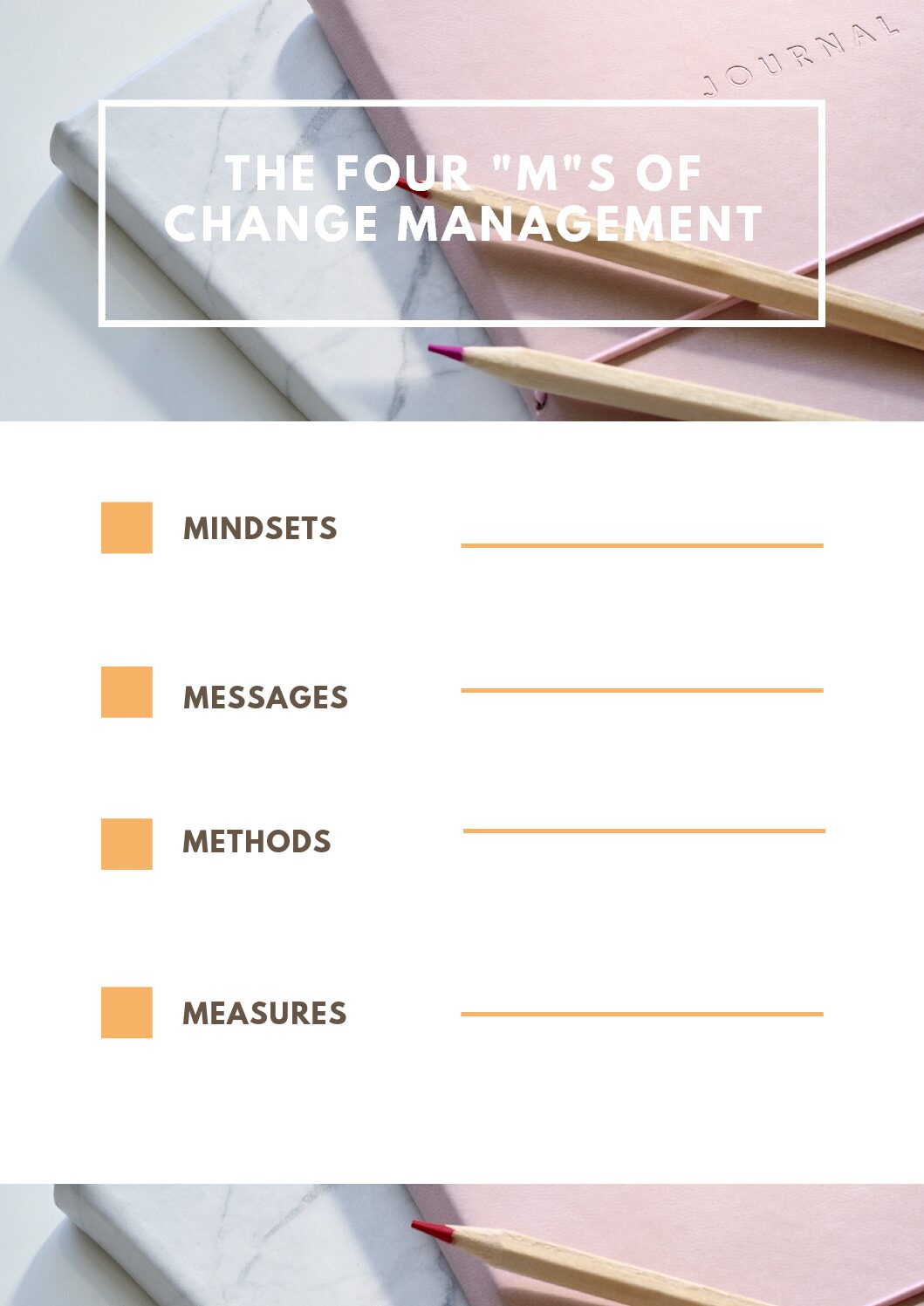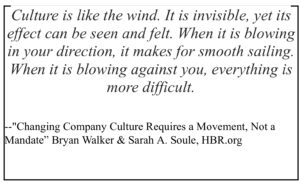Turn and Face the Strain: the Four Ms of Change Management
By: Kelly Donlon Hoy
Major change initiatives in an organization are a huge undertaking with potentially big payoffs and—surprisingly—low success rates (some stats suggest only about 37% of initiatives are realized fully). The astounding number of articles and case studies about the essentials of change management can overwhelm even the most committed “agents of change.”
Complex systems and frameworks guide companies through the disciplined process of developing a strategic vision to implementing a change—with key arms focused on People, Process and Technology. But not every organization is steeped in these methods or tools—or even in the relatively new discipline of change management.
Where to begin? Mastering the 4Ms– Mindset, Messages, Methods, and Measures—is a great way to start.
M1: Mindset

Change practitioners often refer to Mindset as “change readiness” : Where are employees’ “heads” about a potential change? What will they think and feel about the value of the change or the need for it? If employees are not receptive – or they don’t understand why it’s happening, implementation will be next to impossible. Having the right attitudes, perceptions, and beliefs is the most essential ingredient in any change effort.
Assessing mindset includes thinking about how much employees already have on their plates. For instance, your organization has just been acquired and as a result, employees are acclimating to a new culture,asked to launch new products, and report to new managers. Imagine “piling on” another change like a completely new software system. It’s possible that employees just won’t have the bandwidth to embrace one more thing, no matter how critical.
M2: Messages

What helps shift employees’ mindsets? Messages. It’s essential that employees hear a crisp, clear articulation of the change: what it is, why it matters and why now. This applies outside the workplace, too. As humans, we need the right cues and information to jump start and implement change.
Think about it: If you want to improve your health, your commitment will be strengthened by what you see, read, and hear. Maybe an offer to join a gym or a boot camp will spark your interest in moving more. Your family or friends might support you by offering to workout with you. Maybe your physician will point out the need to reduce blood pressure, lower cholesterol or improve the impact on your joints by shifting to a healthier diet. All these data points can help you get into the right mindset to make necessary changes.
Let’s return to the example of rolling out a new software platform at work. Employees need to know why. Is the current system outdated? Is there a competitive need to upgrade?Is the change driven by new policies or regulations? Explaining and communicating consistently will boost the likelihood that the change will happen successfully.
Tip: Know which “channels” are most effective within your organization. Some companies message from the topthrough CEO announcements, town halls, or company-wide emails. Others find a more “local” approach, with front line managers explaining upcoming changes, to be most effective. For larger changes, it’s likely that all channels will be used to create cohesive, consistent messaging.
M3: Methods

Saying you’re going to change and actually doing it are two different things. Part of your message has to be about the “how”—what’s the plan and timing for the change? Employees will appreciate having the approach mapped out. A high level “roadmap” marked with key deliverables and milestones is a good way to provide a snapshot of what’s to come. Major milestones can be celebrated to further motivate and inspire the organization through the change.
“Methods” can often require in-depth project planning. If your organization uses planning tools for other routine operations, they may be repurposed for a change initiative. If not, you can choose from many options –and even experts—to assist with mapping out your approach. This doesn’t have to be overly complicated but should include milestones, a way to address issues and resolve problems, and a communication plan to keep the organization informed.
M4: Measures

Tracking your progress keeps you headed in the right direction, at home and at work. Be aware, challenges or delays are an expected part of the process–but a setback doesn’t mean failure. When you’re simultaneously shifting people, processes, and technology, one or all 3 of these components may hit a temporary impasse. A quick—or not so quick—pause for analysis and problem identification can help you navigate toward a solution and get right back on track.
Pick measures that matter to your project. You can count how many team meetings you had or how many edits someone made to a communication, but those won’t get you closer to a successful outcome. Carefully select the indicators that tell you the project is on track (or not), and make sure the entire team is aware of those metrics and who is accountable for them.
———————————————————————————————–
Looking for an experienced partner to map out the next change at your workplace? KDH can help!
Contact us at : www.kdh-consulting.com


